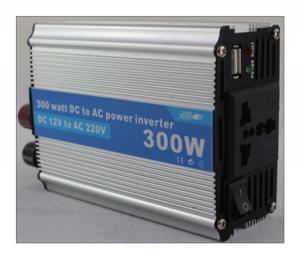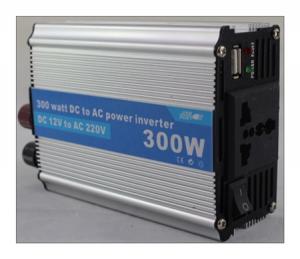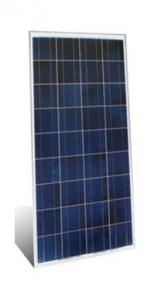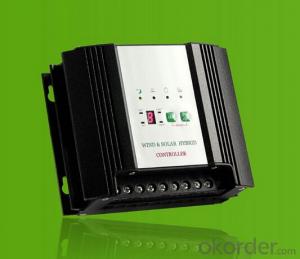Solar Charging Hight Quality Useful Discharging Controller 300W
- Loading Port:
- China main port
- Payment Terms:
- TT or LC
- Min Order Qty:
- 100 unit
- Supply Capability:
- 10000 unit/month
OKorder Service Pledge
OKorder Financial Service
You Might Also Like
1, Product desciption
Inverter circuits designed to produce a variable output voltage range are often used within motor speed controllers.
The DC power for the inverter section can be derived from a normal AC wall outlet or some other source. Control and feedback circuitry is used to adjust the final output of the inverter section which will ultimately determine the speed of the motor operating under its mechanical load.
Motor speed control needs are numerous and include things like: industrial motor driven equipment, electric vehicles, rail transport systems, and power tools. (See related: variable-frequency drive ) Switching states are developed for positive, negative and zero voltages as per the patterns given in the switching Table.
The generated gate pulses are given to each switch in accordance with the developed pattern and thus the output is obtained.
2, Features of the product
Inverters convert low frequency main AC power to higher frequency for use in induction heating.
To do this, AC power is first rectified to provide DC power. The inverter then changes the DC power to high frequency AC power. Due to the reduction in the number of DC Sources employed, the structure becomes more reliable and the output voltage has higher resolution due to an increase in the number of steps so that the reference sinusoidal voltage can be better achieved.
This configuration has recently become very popular in AC power supply and adjustable speed drive applications. This new inverter can avoid extra clamping diodes or voltage balancing capacitors. There are three kinds of level shifted modulation techniques, namely:
The first thing to figure out is the length of road in need of street lights.
This can be a small entrance road only a couple hundred of feet long to miles of streets through an area. Does the area currently have any type of lighting available.
What is the reason for needing street lights in this area
Is the electrical grid already nearby or would you need to call in the power company to bring in electrical lines.
If the electric needs to be brought to the area, how much is this going to cost? Depending on how far the grid electric is from the location of the needed lighting, this can be quite expensive.
How much lighting is needed on the street? Do the lights need to be dark sky compliant.
Do the street lights need to run from dusk to dawn or for only a specified number of hours at night.
Are the street lights able to dim in the middle of the night and still provide enough lighting.
These questions need to be answered before you can decide on how many lights you will need to complete the project.
3, Product Image
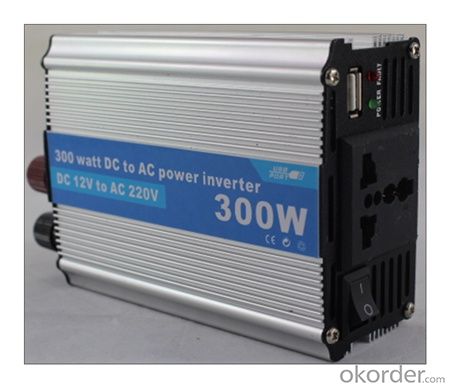
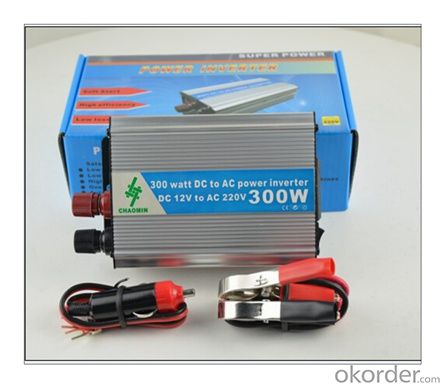
4, Detailed Specification
Specification:
Model | Tracer |
Rated system voltage | 12/24V auto work |
Rated battery current | 40A |
Rated load current | 20A |
Max.battery voltage | 32V |
Max.PV open circuit voltage | 100VDC |
Max.PV input power | 12V 500W, 24V 1000W |
Self-consumption | <10mA(24V) |
Charge Circuit Voltage Drop | ≤0.26V |
Discharge Circuit Voltage Drop | ≤0.15V |
Communication | TTL232 / 8 pin RJ45 |
Temp.compensation | -5mV/℃/2V |
Working temperature | -35℃~+55℃ |
Storage temperature range | -35℃~+80℃ |
Humidity | 10%-90% NC |
Enclosure | IP30 |
Altitude | ≤3000m |
Dimension | 242mm x 169mm x 91mm |
Mounting holes | 180mm x 160mm |
Mounting hole size | Φ5 |
Terminal | 25mm2 |
Weight | 2.05kg |
- Q:How does a solar controller handle power surges from the solar panels?
- A solar controller typically handles power surges from solar panels by using a built-in protection mechanism. This mechanism regulates the flow of electricity, preventing any excess power from reaching the batteries or other connected devices. It ensures that the voltage and current levels remain within safe limits, safeguarding the entire solar power system from potential damage caused by power surges.
- Q:Can a solar controller be used with solar panel arrays in series?
- Yes, a solar controller can be used with solar panel arrays in series. The solar controller regulates and optimizes the charging of the batteries, regardless of the configuration of the solar panels.
- Q:Can a solar controller be used with solar-powered remote monitoring systems?
- Yes, a solar controller can be used with solar-powered remote monitoring systems. A solar controller regulates the electrical charge from solar panels and ensures the batteries are charged efficiently. This is crucial for remote monitoring systems as it helps maintain a steady power supply and prolongs the battery life, enabling continuous and reliable operation.
- Q:Are there any disadvantages of using a solar controller?
- Yes, there are some disadvantages of using a solar controller. One major disadvantage is that solar controllers can be quite expensive to purchase and install. The cost of a solar controller can add to the overall cost of setting up a solar power system, which may be a deterrent for some individuals or businesses. Another disadvantage is that solar controllers can be quite complex to operate and maintain. They require proper programming and configuration to ensure optimal performance, and regular maintenance to keep them functioning efficiently. This may require technical expertise or the hiring of professionals, which can be an additional cost. In addition, solar controllers can have limited compatibility with certain solar panels or battery systems. It is important to ensure that the solar controller is compatible with the specific components of the solar power system, otherwise it may not function properly or could even cause damage. Lastly, solar controllers rely on sunlight to generate power, so they may not be as effective in areas with limited sunlight or during cloudy days. This can result in reduced energy production and may require alternative power sources or energy storage solutions. Overall, while solar controllers offer many benefits in terms of regulating and optimizing solar power systems, they do come with some disadvantages that need to be considered before making a decision.
- Q:Can a solar controller be used with solar panels that are mounted on a pole?
- Solar panels mounted on a pole can indeed be used with a solar controller. The solar controller has a vital function in the regulation of voltage and current between the panels and the battery bank. Its primary purpose is to ensure that the batteries are charged correctly and shielded against overcharging. Irrespective of whether the solar panels are mounted on a pole or any other structure, the solar controller can still be linked to them to supervise and manage the charging process. By analyzing the power received from the panels, the solar controller will adapt the charging parameters, thereby optimizing the efficiency and durability of the battery system.
- Q:How to adjust the solar controller
- Solar controller mode: 1, pure light control mode: when there is no sunlight, the light intensity dropped to the starting point, the controller delay 10 minutes to confirm the start signal, according to set the parameters to open the load, the load began to work; when there is sunlight , The light rises to the start point, the controller delay 10 minutes to confirm the closure of the signal after the closure of the output, the load stops working.
- Q:What is the role of a solar controller in preventing battery sulfation?
- The role of a solar controller in preventing battery sulfation is to regulate the charging process of the battery and ensure that it is done efficiently and effectively. By monitoring the battery voltage and current, the solar controller can prevent overcharging, which is a major cause of battery sulfation. It also controls the charging rate to avoid undercharging, which can lead to sulfation as well. Overall, the solar controller plays a crucial role in maintaining the optimal charging conditions for the battery, thereby preventing sulfation and prolonging its lifespan.
- Q:Can a solar controller be used with solar-powered mobile charging stations?
- Yes, a solar controller can be used with solar-powered mobile charging stations. A solar controller regulates the flow of electricity from the solar panels to the charging stations, ensuring optimal charging and preventing overcharging or damage to connected devices. It also helps in managing power distribution and maximizing the efficiency of the charging process.
- Q:Can a solar controller be used with solar panels of different efficiencies?
- Solar panels with different efficiency levels can still be used with a solar controller. The primary function of a solar controller is to regulate the flow of electricity from the panels to the batteries or grid. It is designed to handle varying input voltages and currents from the panels. The efficiency of a solar panel refers to its ability to convert sunlight into electricity. Higher efficiency panels generate more power for a given amount of sunlight. However, the panel's efficiency does not impact its compatibility with a solar controller. As long as the voltage and current of the panels fall within the supported range of the solar controller, they can be used together regardless of their individual efficiencies. The solar controller will manage the charging process and ensure that the batteries or grid receive the optimal amount of power from the panels, regardless of their efficiency.
- Q:Can a solar controller be used with solar water heaters?
- Yes, a solar controller can be used with solar water heaters. The solar controller helps in regulating and optimizing the operation of the solar water heater system by monitoring and controlling the flow of heat transfer fluid and maintaining the desired temperature in the storage tank. It also ensures the efficient usage of solar energy and protects the system from overheating or freezing.
1. Manufacturer Overview |
|
|---|---|
| Location | |
| Year Established | |
| Annual Output Value | |
| Main Markets | |
| Company Certifications | |
2. Manufacturer Certificates |
|
|---|---|
| a) Certification Name | |
| Range | |
| Reference | |
| Validity Period | |
3. Manufacturer Capability |
|
|---|---|
| a)Trade Capacity | |
| Nearest Port | |
| Export Percentage | |
| No.of Employees in Trade Department | |
| Language Spoken: | |
| b)Factory Information | |
| Factory Size: | |
| No. of Production Lines | |
| Contract Manufacturing | |
| Product Price Range | |
Send your message to us
Solar Charging Hight Quality Useful Discharging Controller 300W
- Loading Port:
- China main port
- Payment Terms:
- TT or LC
- Min Order Qty:
- 100 unit
- Supply Capability:
- 10000 unit/month
OKorder Service Pledge
OKorder Financial Service
Similar products
New products
Hot products
Hot Searches
Related keywords
